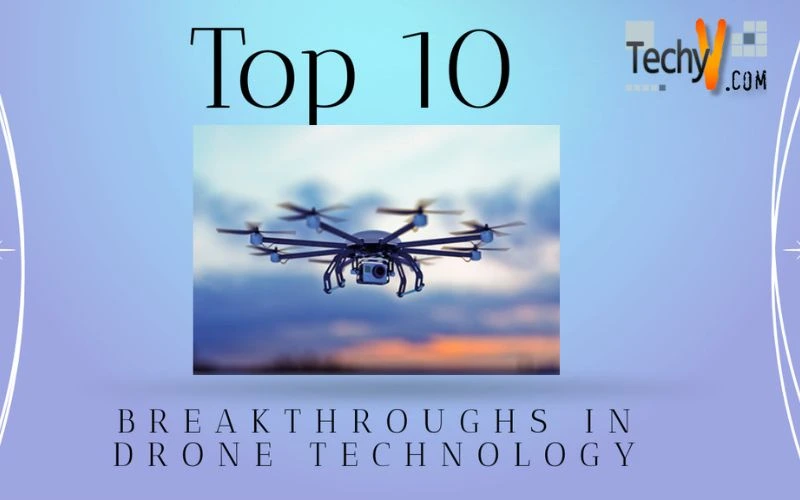In recent years, drone technology has rapidly evolved from being a niche gadget to a transformative tool with a myriad of applications across various industries. As we look ahead, the future of drone technology promises even more exciting innovations and trends that could reshape how we interact with the world around us. This article explores the forefront of drone advancements, from cutting-edge hardware to sophisticated software capabilities, and discusses the implications for industries, regulations, and society at large.
Advances in Drone Hardware
One of the most notable trends in drone technology is the continuous advancement in hardware. Miniaturization and the use of lightweight materials have been pivotal in enhancing drone capabilities. Manufacturers are increasingly incorporating miniaturized components such as high-capacity batteries and advanced sensors, which not only reduce the overall weight of drones but also improve their agility and endurance. These advancements are crucial for applications that require prolonged flight times and precise maneuverability, such as aerial photography, mapping, and surveillance.
Moreover, improvements in battery technology have addressed one of the longstanding challenges of drone operation: limited flight time. The development of longer-lasting batteries and enhancements in energy efficiency have extended drones’ operational range, enabling them to cover larger areas and undertake more complex missions without the need for frequent recharging. This has significant implications for industries like agriculture, where drones are used for crop monitoring and spraying, and in emergency response scenarios, where every minute of extended flight time can make a critical difference.
Evolution of Drone Software
In tandem with hardware advancements, the evolution of drone software has been equally transformative. Artificial intelligence (AI) and machine learning have revolutionized drone capabilities by enabling autonomous flight and intelligent decision-making. AI-powered drones can autonomously navigate complex environments, avoid obstacles in real-time, and even analyze data collected during flights. These capabilities are particularly valuable in industries such as infrastructure inspection, where drones equipped with AI can identify structural defects or assess the condition of hard-to-reach assets more efficiently than human inspectors.
Furthermore, improvements in control interfaces have democratized drone usage, making them more accessible to both professionals and hobbyists alike. User-friendly interfaces and intuitive controls allow operators to focus more on the task at hand rather than on mastering complex flight maneuvers. Enhanced control accuracy and customization options have also contributed to the widespread adoption of drones in various sectors, from media and entertainment to environmental monitoring and scientific research.
Cutting-Edge Applications
The applications of drone technology continue to expand, driven by ongoing innovations and practical use cases. In the realm of delivery and logistics, drones are increasingly being employed for last-mile deliveries, particularly in remote or congested areas where traditional logistics face challenges. Companies like Amazon and UPS have already conducted successful trials of drone delivery services, showcasing the potential for drones to revolutionize supply chain operations by reducing delivery times and costs.
In terms of surveillance and security, drones have become indispensable tools for law enforcement agencies and private security firms. Drones equipped with high-definition cameras and thermal imaging sensors can conduct aerial surveillance more discreetly and effectively than traditional methods. They are used for monitoring public events, border patrol, and search and rescue missions, enhancing situational awareness and response capabilities in critical situations.
Regulatory Landscape
While technological advancements in drones are accelerating, the regulatory landscape governing their use remains a critical factor shaping their future. Globally, governments are grappling with how to safely integrate drones into airspace while addressing concerns related to privacy, security, and public safety. Current regulations vary widely from country to country, ranging from stringent restrictions on drone operations in urban areas to more permissive frameworks in rural or controlled environments.
Efforts are underway to establish standardized regulations that balance innovation with safety and privacy considerations. Anticipated regulatory changes include the introduction of mandatory remote identification systems for drones, which would enable authorities to identify and track drones in real-time, enhancing airspace management and security. Moreover, initiatives to promote responsible drone use through education and certification programs are expected to play a crucial role in fostering a safe and compliant drone ecosystem.
Future Challenges and Opportunities
Looking ahead, the future of drone technology presents both challenges and opportunities. The integration of drones into urban air mobility (UAM) systems holds promise for revolutionizing urban transport, potentially alleviating traffic congestion and reducing carbon emissions. However, widespread adoption of UAM will require significant investments in infrastructure, air traffic management systems, and regulatory frameworks that can support safe and efficient drone operations in densely populated areas.
Environmental sustainability is another critical consideration as the drone industry continues to expand. Efforts to develop eco-friendly drones powered by renewable energy sources and to mitigate the environmental impact of drone manufacturing and operation are gaining traction. Innovations in noise reduction technology and advancements in battery recycling and disposal practices are essential for minimizing the carbon footprint associated with drone use.
In conclusion, the future of drone technology is poised for continued innovation and transformation across various sectors. Advancements in hardware and software capabilities, coupled with expanding applications and evolving regulatory frameworks, are paving the way for drones to become indispensable tools in our daily lives. As we navigate the opportunities and challenges ahead, collaboration between industry stakeholders, policymakers, and the public will be crucial in harnessing the full potential of drones while ensuring safety, privacy, and sustainability.
Keep an eye for more news & updates onDiscoverTribune.Org!




